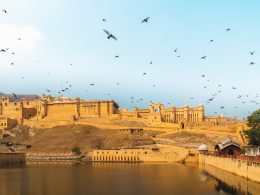The narrative of North American empires is often left untold, eclipsed by the grandeur of Old World civilizations. Yet, in the shadows of this historical oversight, the Comanche nation carved out an empire in their image, one that reshaped the Great Plains and its peoples. Known as Comancheria, it was an empire unlike any other, woven together not by stone and mortar, but by mastery of the horse, acumen in trade, and a language that transcended tribal lines.
The Comanche Ascendancy
Emerging from the Shoshone tribes of the Rocky Mountains, the Comanches were originally hunter-gatherers. The introduction of the horse, a seismic event brought by the Spanish, turned them into one of the most skilled equestrian cultures in history. With this newfound mobility, they swept across the plains, expanding their reach and influence.

The Territory of Comancheria
Comancheria was less a kingdom with defined borders than a region marked by the range of the Comanche raids and trade routes. It was an expanse where Comanche law was recognized, and their warriors were feared. From the Arkansas River to the Brazos, from the Red River to the Rio Grande, the Comanches patrolled and presided over a territory that became synonymous with their name.
Sociopolitical Structure: Independence within Unity
The Comanche nation was a confederation of independent bands, each sovereign but bound together by common language, culture, and interests. Leaders were chosen for their merits and leadership skills, particularly as raid leaders and warriors, echoing the meritocratic tendencies of some of the greatest empires in history.
The Lingua Franca of the Plains
Comanche became the lingua franca across the territories, not through conquest but through pervasive influence. It was the language of trade and negotiation, spoken in parleys with enemies and allies alike. As European settlers expanded westward, many learned Comanche to facilitate communication, a clear testament to the extent of Comanche dominance.
Masters of Trade and Diplomacy
At its height, Comancheria operated as a hub of extensive trade networks. The Comanches exchanged goods with distant tribes and European settlers alike, trading horses, hides, and captives with a business acumen that would rival the guilds of Renaissance Europe. Their strategic marriages and alliances allowed them to wield power in a shifting frontier landscape.
The Military Might of the Comanche
The Comanche military might was legendary. Their cavalry could strike with swift ferocity or fade into the vastness of the plains with equal ease. Their tactics were not of pitched battles but of guerrilla warfare, raids, and skirmishes that leveraged their intimate knowledge of the vast lands they roamed.
The Ebbing of an Empire
The decline of Comancheria was a culmination of relentless pressure from U.S. military campaigns, the near extinction of the buffalo, and the scourge of diseases. The once-feared Comanche warriors, who had dictated terms to colonial Spain and Mexico, found themselves signing treaties with the United States, each one a cession of their sovereign power and land.
The Cultural Legacy of the Comanches
Today, the story of the Comanches resonates as a poignant chapter of American history, a tale of a people whose equestrian skills and strategic prowess carved out an empire of grass and wind. The remnants of Comancheria linger in the place names of the Southwest, in the stories passed down through generations, and in the proud heritage of the Comanche people today.
Conclusion: The Great Plains’ Empire of the Comanches
Comancheria stands as a unique case in the annals of empire—an expansive, mobile entity that dominated through force, trade, and diplomacy. It was an empire where language served as the sinew binding diverse peoples, and adaptability was the currency of power.
The Comanche empire, though often overlooked, endures as a powerful symbol of Native American resilience and agency, a testament to the diverse forms that empires can take and the indelible mark they leave on history.
**Please note that this post may contain affiliate links. When booking through one of our links, we earn a small kickback at no extra cost to you and it’s a big help to keep the site up and running.









